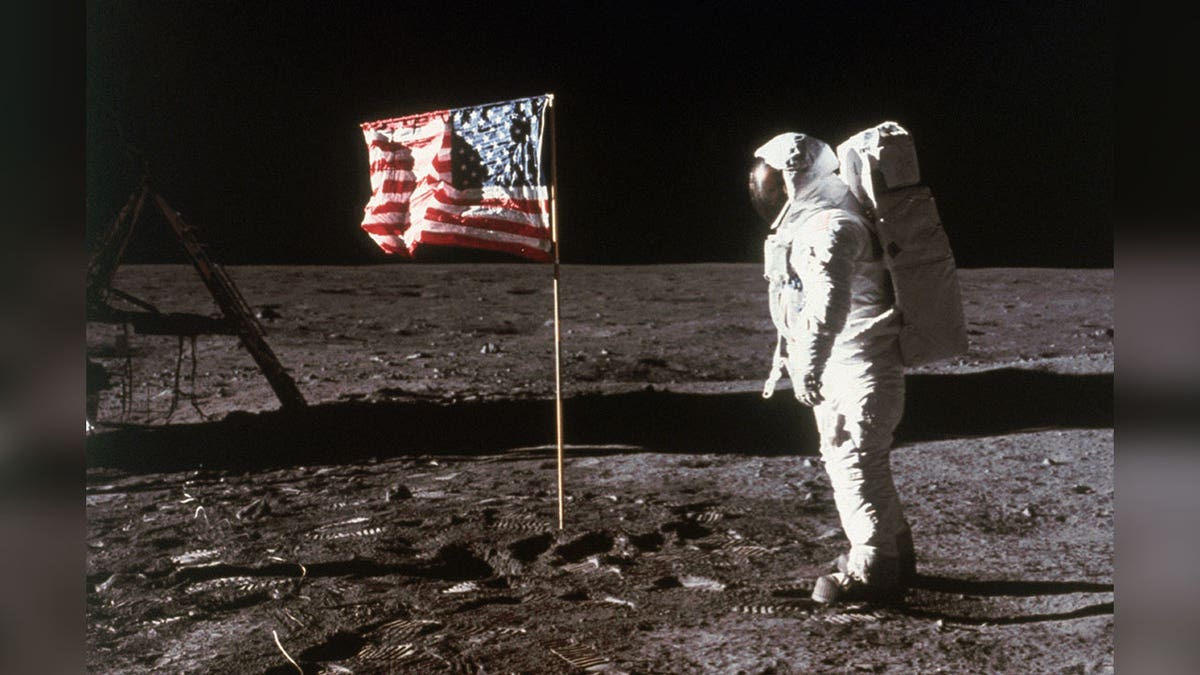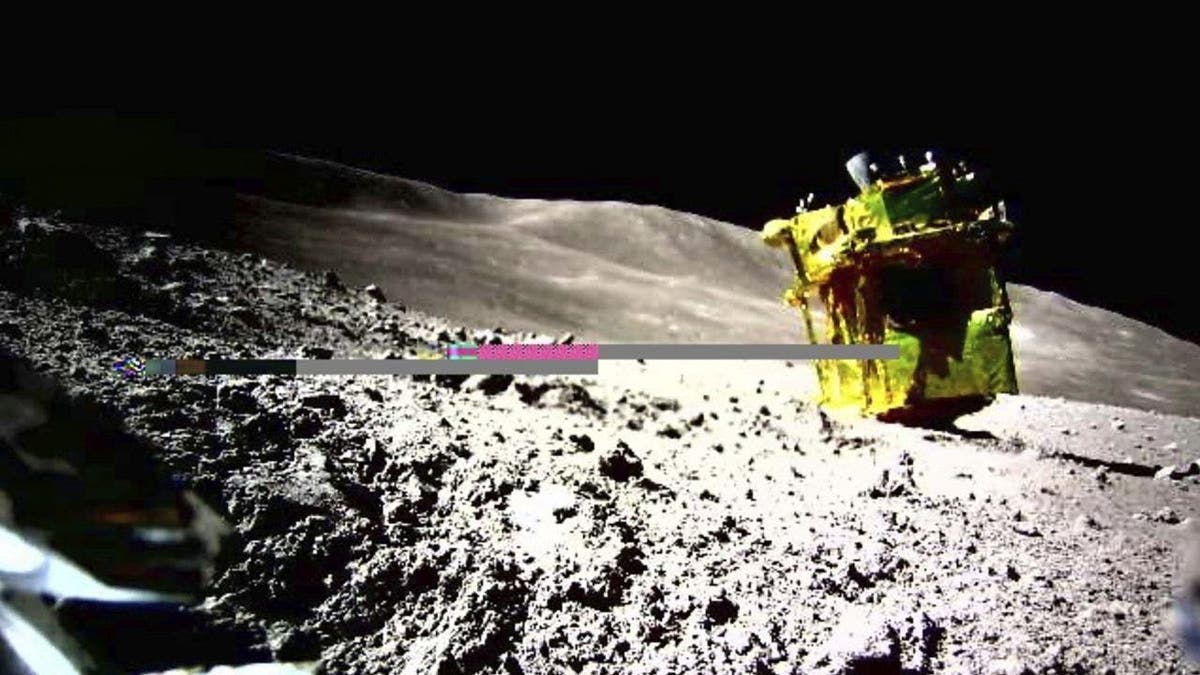First commercial moon lander 'Odysseus' lands on moon
Fox News correspondent Christina Coleman joins 'Fox Report' with the latest on the U.S. successfully landing on the moon for first time in half-century through a partnership with NASA and Intuitive Machines.
If you think that’s crazy, think again.
Americans can be proud that the Odysseus lunar lander just made the first United States landing on the moon in more than 50 years. It’s also the first successful landing of a commercial spacecraft on the moon, by Intuitive Machines, after another U.S. lunar lander crash-landed last month.
But if we try it again, don’t be surprised if China decides to charge us with trespassing.
SEN HAWLEY WARNS CONSULTING FIRMS AGAINST WORKING WITH CHINA TO 'UNDERMINE AMERICA'
That’s because Beijing sees the moon as its next great territory grab, just as it did with the South China Sea during the Obama years. And while we’re just getting back to thinking about lunar landings and exploration after a 50-year hiatus, China is planning to turn space, including the moon, into its special preserve where it sets the rules and stakes its claims — including eventually military bases.

Astronaut Buzz Aldrin stands beside an American flag placed on the moon in 1969. (Bettmann / Contributor)
Bill Nelson of NASA warned about this in an interview in Politico in January last year: "We better watch out that they don’t get to a place on the moon under the guise of scientific research. And it is not beyond the realm of possibility that they say, ‘Keep out, we’re here, this is our territory.’"
China’s bold move into space — with three lunar landings in the past decade — underlines the fact that the new space race is about territory and resources, as much as science and exploration. Unless we’re ready to confront the threat, we’ll see Chinese bases, even military bases, dominating the moon’s future — and the future of space.
China has now landed spacecraft on the lunar surface successfully three times. After sending a spacecraft to orbit the moon in 2007 and again in 2010, China landed the Chang’e-3 spacecraft in 2013, becoming the first nation to soft-land on the lunar surface after the United States and the Soviet Union.
Then, in early 2019, China became the first country to land a spacecraft on the moon’s far side. And in 2020 it brought back samples from the lunar surface. This year, it intends to fly its Chang’e-6 mission, which will visit the moon’s far side again to collect and return with mineral samples. Chang’e-7 would land near the moon’s south pole in 2026, which will be the site of a settlement China calls the International Lunar Research Station.
The moon’s south pole is a primary object for exploration by both China and the United States. There is evidence of water there in the form of ice: an important building block for more permanent settlements.
And while the international Outer Space Treaty of 1967 states that no country can claim sovereignty on the moon, China could insist its bases there form an exclusion zone. They will be free to expand at will — while keeping the U.S. and others out.
CLICK HERE FOR MORE FOX NEWS OPINION
Anticipating this, the Trump administration put together the Artemis accords, a series of bilateral agreements establishing rules for the peaceful use of outer space and for governance of the surface of the moon.
Before it made its Chandrayaan-3 moon landing last year, India signed the accords. But China hasn’t.

This shows an image taken by a Lunar Excursion Vehicle 2 (LEV-2) of a robotic moon rover called Smart Lander for Investigating Moon, or SLIM, on the moon. (JAXA/Takara Tomy/Sony Group Corporation/Doshisha University via AP)
Its Communist ruler Xi Jinping was forthright about China’s strategy in a January 2022 white paper: "To explore the vast cosmos, develop the space industry and build China into a space power is our eternal dream." Boosting China’s commercial space industry is a critical part of this plan, which "is subject to and serves the overall national strategy."
That’s going to include a Chinese presence on the moon, that dominates its future.
CLICK HERE TO GET THE FOX NEWS APP
Doing this is more than a matter of money. The combined annual budgets for our National Aeronautics and Space Administration and Space Force of more than $50 billion dwarf what the Chinese government spends ($12 billion in 2022). It’s a matter of having the right strategy for harnessing the energy and innovation of private industry.
In fact, the answer to the China challenge is right at our fingertips, with companies like Intuitive Machines, Space-X, Blue Origin and many others that already dominate the global commercial space industry. By bringing them into a comprehensive U.S. space strategy shared by NASA and Space Force, we can keep China from foreclosing on the rest of us, when it comes to putting humans back on the moon.























